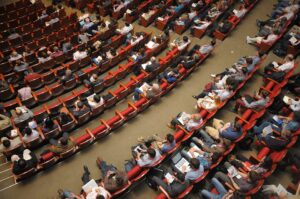Mississippi State students can now learn how to maneuver high-risk features of the agriculture industry via 3D VR technology and the MSU’s Future Growers Technology Initiative.
The initiative is a one-of-a-kind virtual reality simulated greenhouse, created through the program’s cross-college collaboration efforts, gives future farmers a safer high tech tool to analyze crop production. The initiative is a partnership of the University’s Department of Plant and Soil Sciences and the Center for Advanced Vehicular Systems.
It is funded via a federal grant and headed by Amelia Fox, who is the principal investigator.
“With virtual reality, we can tackle teaching high-risk agricultural enterprise, defined as anything that could result in significant loss—from loss of life or limb to loss of production, equipment or supplies. From how to control a greenhouse or poultry house to how to operate a tractor, virtual reality can help students learn to navigate high-risk situations safely. We want students to have access to failure. The more knowledgeable you become about failure, the more likely you can avert it. One silver lining of the COVID-19 pandemic is that it’s shown us how technology can enhance face-to-face learning, which has limitations.” – Amelia Fox.
Associate research professor at CAVS, Daniel Carruth, mentioned that the team advanced the prototype in three sections, shaping the greenhouse with temperature, water, and nutrient settings before developing the control panel and user interface.
“The goal of virtual reality is to give students access to something they wouldn’t necessarily have access to in a faster way. With this system, students can now complete crop planting, growth and harvest within hours compared to the months it takes in the real world.” – Daniel Carruth.
The prototype is currently refined by Pulseworks. Students can grow tomatoes, spinach, and lettuce in the virtual greenhouse while troubleshooting insect and disease pressure and more. They will also test the effectiveness of the system by estimating how much the students learn from it.
The virtual reality technology uniquely positions students to reap hands-on experience operating greenhouse controls, which they did not have access to earlier.
Follow us on LinkedIn
Read other Articles




